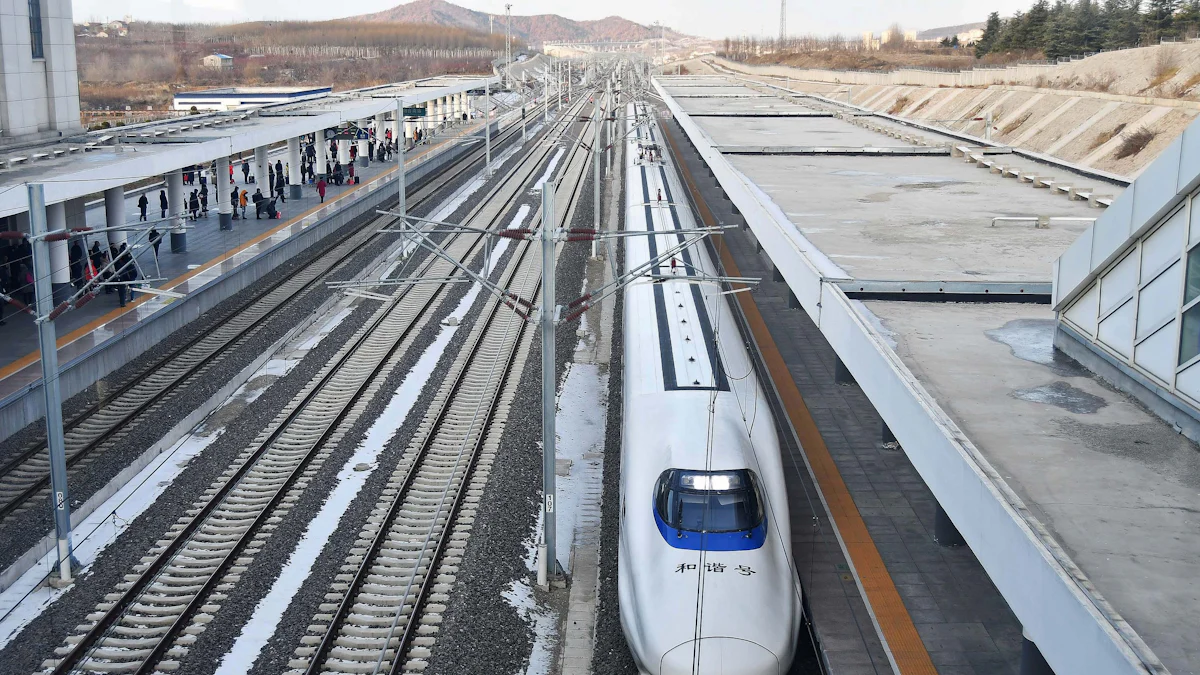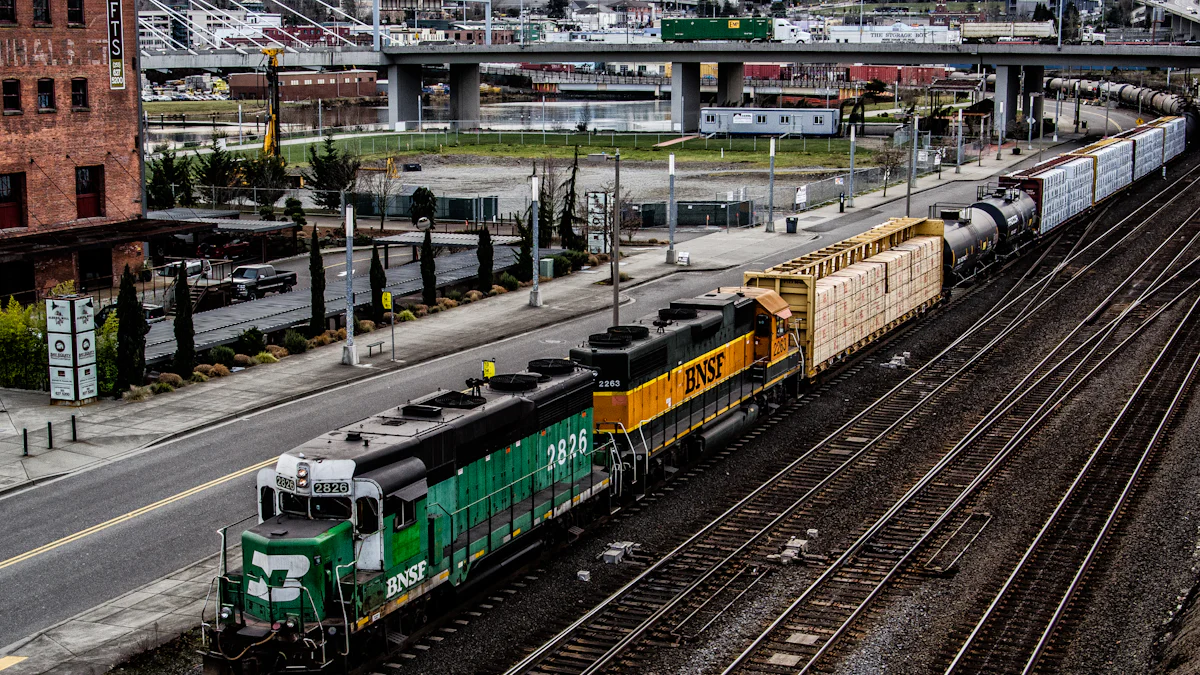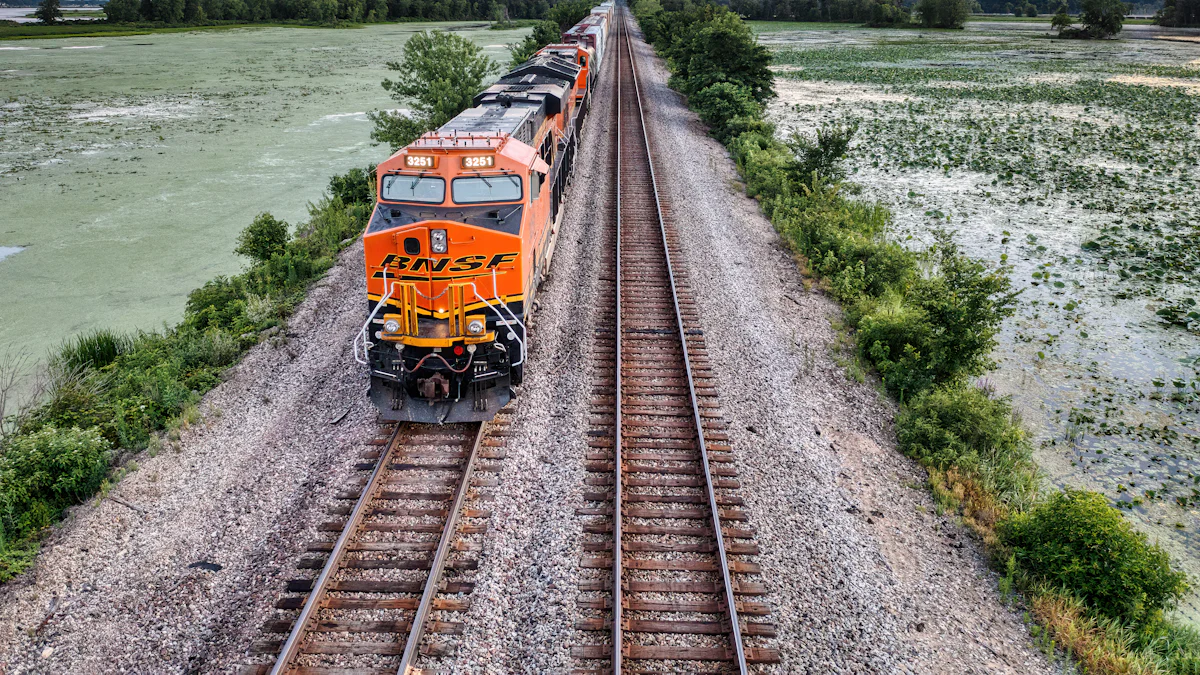China-Europe Railway: Key Trends Shaping the Rail Transport Market in 2024

The China-Europe Railway has become a vital artery in global trade. This extensive rail network connects major cities across China and Europe, facilitating the efficient movement of goods. The importance of this rail network cannot be overstated, as it significantly reduces transit times compared to sea freight. The year 2024 marks a pivotal moment for the rail transport market. Several key trends are poised to reshape the landscape, driven by technological advancements, policy changes, and evolving market dynamics.
Current State of the China-Europe Railway

Infrastructure Developments
Recent Upgrades and Expansions
The China-Europe Railway has seen significant infrastructure developments. The network has undergone extensive upgrades and expansions. The west, middle, and east routes have experienced increased activity. The west route saw a 13% rise in trips. The middle route observed a 20% increase. The east route recorded a 5% growth. The south route experienced a remarkable 15-fold increase in trips. These expansions enhance the capacity and efficiency of the rail network.
Technological Innovations
Technological innovations play a crucial role in the China-Europe Railway's development. Automation and AI integration streamline operations. Real-time monitoring systems track temperature, humidity, and other factors. These technologies ensure high-quality service and operational efficiency. Big data processing capabilities help predict production and sales trends. This optimization strengthens supply chain management.
Operational Statistics
Freight Volume and Capacity
Freight volume on the China-Europe Railway continues to grow. In the first two months of 2024, the number of freight train trips reached 2,928. This marks a 9% year-on-year increase. The volume of goods transported rose by 10% during the same period. The Greater Bay Area (GBA) has seen a 15% annual increase in rail freight volume since 2011. The network's capacity to handle large volumes of goods underscores its importance in global trade.
Key Routes and Hubs
Key routes and hubs form the backbone of the China-Europe Railway. Major routes include the west, middle, and east corridors. These routes connect major cities across China and Europe. Important hubs such as Chongqing, Zhengzhou, and Duisburg facilitate efficient cargo movement. The strategic placement of these hubs optimizes transit times and enhances connectivity.
Economic Impact
Trade Relations Between China and Europe
The China-Europe Railway strengthens trade relations between China and Europe. The rail network facilitates the movement of goods, boosting bilateral trade. The efficient transport system reduces transit times compared to sea freight. This advantage makes the railway an attractive option for businesses. The increased trade volume fosters economic cooperation between the two regions.
Economic Benefits for Participating Countries
Participating countries reap significant economic benefits from the China-Europe Railway. The rail network creates job opportunities and stimulates local economies. Improved logistics and reduced transportation costs benefit businesses. The railway's efficiency enhances competitiveness in the global market. Countries along the route experience economic growth and development.
Key Trends Shaping the Market in 2024
Technological Advancements
Automation and AI in Rail Operations
Railway companies have embraced automation and AI to enhance operational efficiency. AI technologies address around 20 key use cases, unlocking an estimated $13 billion to $22 billion in impact annually. About 25 percent of rail companies have implemented AI at scale across multiple applications. AI transforms the railway industry, making operations more efficient and safer. Cutting-edge AI redefines railway operations, elevating safety, efficiency, and reliability.
Sustainable and Green Technologies
Sustainable and green technologies play a crucial role in the China-Europe Railway. Energy-saving measures and emission reduction initiatives align with global sustainability goals. The integration of green technologies reduces the environmental impact of rail transport. Rail companies focus on developing eco-friendly solutions to meet regulatory requirements. These efforts contribute to a greener and more sustainable rail network.
Policy and Regulatory Changes
New Trade Agreements
New trade agreements influence the China-Europe Railway market. These agreements facilitate smoother and more efficient trade between participating countries. Enhanced trade relations boost the volume of goods transported via the rail network. New policies aim to streamline customs procedures and reduce transit times. These changes make rail transport a more attractive option for businesses.
Environmental Regulations
Environmental regulations shape the future of the China-Europe Railway. Governments implement stricter emission standards to combat climate change. Rail companies must adopt cleaner technologies to comply with these regulations. The focus on sustainability drives innovation in the rail transport sector. Compliance with environmental regulations ensures the long-term viability of the rail network.
Market Dynamics
Competition with Other Transport Modes
The China-Europe Railway faces competition from other transport modes. Sea freight and air cargo offer alternative options for businesses. Each mode has its advantages and disadvantages. The rail network competes by offering faster transit times compared to sea freight. Cost-effectiveness and reliability make rail transport an appealing choice. The ability to handle large volumes of goods strengthens the railway's position in the market.
Shifts in Global Supply Chains
Global supply chains continue to evolve, impacting the China-Europe Railway. Businesses seek more resilient and flexible supply chain solutions. The rail network adapts to changing market demands and logistical challenges. Multimodal transport solutions enhance the efficiency of supply chains. The integration of road, water, and rail transport optimizes cargo movement. These shifts position the China-Europe Railway as a key player in global logistics.
Challenges and Opportunities

Challenges
Infrastructure Bottlenecks
Infrastructure bottlenecks present a significant challenge for the China-Europe Railway. The rapid expansion of the rail network has outpaced the development of supporting infrastructure. Key routes experience congestion, leading to delays and inefficiencies. Limited capacity at major hubs exacerbates these issues. The need for continuous upgrades and maintenance strains resources. Addressing these bottlenecks requires substantial investment and strategic planning.
Geopolitical Tensions
Geopolitical tensions impact the stability and reliability of the China-Europe Railway. Trade partnerships face disruptions due to political conflicts. Sanctions and trade barriers hinder smooth operations. Diplomatic relations between participating countries influence the flow of goods. The railway must navigate complex international dynamics. Ensuring stable and predictable operations remains a challenge in this volatile environment.
Opportunities
Expansion into New Markets
Expansion into new markets offers significant growth opportunities for the China-Europe Railway. Emerging markets in Southeast Asia and Central Asia present untapped potential. Developing new routes can enhance connectivity and increase freight volumes. Customized services for different regions can meet diverse market demands. Strategic expansion can strengthen the railway's position in global trade networks.
Public-Private Partnerships
Public-private partnerships (PPPs) provide a viable solution for overcoming challenges and seizing opportunities. Collaboration with private sector entities can bring in much-needed investment. PPPs can facilitate the development of advanced infrastructure and technology. Joint ventures can optimize resource utilization and operational efficiency. Strong partnerships with government bodies ensure regulatory compliance and support. PPPs can drive innovation and growth in the rail transport market.
Future Outlook
Projections for 2024 and Beyond
Expected Growth in Freight Volume
The China-Europe Railway will likely see substantial growth in freight volume. Trade volumes between China and Europe have increased due to globalization and rising consumer demand. The growth of e-commerce has also fueled the need for efficient transportation solutions. The trade volume is expected to grow from 1.2 million tonnes in 2016 to 3.7 million tonnes by 2030. This increase reflects the railway’s role in enhancing trade capacity and economic integration.
Long-term Economic Impact
The long-term economic impact of the China-Europe Railway will be significant. The railway will continue to strengthen trade relations between China and Europe. The efficient transport system will reduce transit times and costs for businesses. Countries along the route will experience economic growth and development. Job opportunities will increase, stimulating local economies. The railway's efficiency will enhance competitiveness in the global market.
Strategic Recommendations
Investment Priorities
Investment priorities should focus on infrastructure development. Upgrading and expanding key routes will alleviate congestion. Increasing capacity at major hubs will enhance efficiency. Investing in advanced technologies will improve operational performance. Automation and AI will streamline operations and reduce costs. Sustainable and green technologies will align with global sustainability goals.
Policy Recommendations
Policy recommendations should aim to support the growth of the China-Europe Railway. Governments should implement policies that facilitate smoother trade. Streamlining customs procedures will reduce transit times. Environmental regulations should encourage the adoption of cleaner technologies. Public-private partnerships will bring in much-needed investment. Collaboration with private sector entities will drive innovation and growth.
The China-Europe Railway has experienced significant growth and transformation. Key trends such as technological advancements, policy changes, and market dynamics have reshaped the rail transport landscape. The integration of AI and green technologies has enhanced operational efficiency and sustainability. New trade agreements and environmental regulations have further streamlined operations.
The future of the China-Europe Railway looks promising. The railway will continue to play a crucial role in global trade. Stakeholders must invest in infrastructure and technology. Collaboration with government bodies and private entities will drive innovation and growth. The rail transport market stands on the brink of a new era.
See Also
Insights into Ocean Freight: What's Ahead in 2024?
Enhancing Supply Chain Productivity: 5 Key Trends
Preparing for the Future: Exploring Transport Tech for Supply Chains
